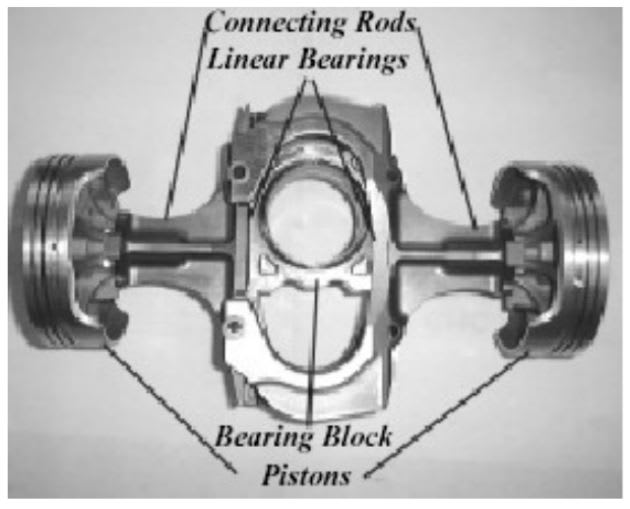thread71-376751
Anyone seen the CMC Sytek Scotch Yoke Engine? Completely kills the imbalance problems that conventional direct couple conn rod types suffer from. Interesting how it resembles the Original reverse cam effect Bourke Engine invented by Russell Bourke back in the early 1930's!
But what about utilizing only half the scotch yoke and applying it to conventional inline 4 and 6 cylinder engines? I thought this up decades ago when I was first introduced by a friend to the Bourke Engine Documentary written by Lois Bourke back in the early 70's. Have wondered what the real world result would be for a very long time and due to lack of resources, have not yet been able to find out. Would be easy enough to simulate on today's super fact computers.
It is very easy to realize that this solves imbalance and piston side loading problems associated with conventonal conn rod setups due to lack of direct coupling of the conn' rod to the throw. This advantege is obvious to anyone who can see and think.
One of Russell's main goals was to cure all vibration problems inherrant in conventional engines.
Also, there is a free piston engine design called the Bourke Engine, invented by Russell Bourke back in the 1930's! Basically a dual 2 stroke cylinder design with pistons fixed to a ridged inline connecting rod through a scotch yoke mechanism that simply imparts power to the rotating mass as it is not directly coupled thereto. Sort of the mechanical version of passive agressive!
Russell Bourke designed the worlds first HCCI engine without realizing it or at least without naming it correctly. His primary discovery and goal was to achieve clean cool environmentally friendly exhaust emissions via an inverted combustion process known in conventional terms as pre-ignition! He so acheived these goals in his design. His purpose was to do away with multiple parasitic power robbing parts and that's exactly what he achieved way back in the 1930's! It's still the worlds most efficient piston I/C engine ever too!
For free info - /
Anyone seen the CMC Sytek Scotch Yoke Engine? Completely kills the imbalance problems that conventional direct couple conn rod types suffer from. Interesting how it resembles the Original reverse cam effect Bourke Engine invented by Russell Bourke back in the early 1930's!
But what about utilizing only half the scotch yoke and applying it to conventional inline 4 and 6 cylinder engines? I thought this up decades ago when I was first introduced by a friend to the Bourke Engine Documentary written by Lois Bourke back in the early 70's. Have wondered what the real world result would be for a very long time and due to lack of resources, have not yet been able to find out. Would be easy enough to simulate on today's super fact computers.
It is very easy to realize that this solves imbalance and piston side loading problems associated with conventonal conn rod setups due to lack of direct coupling of the conn' rod to the throw. This advantege is obvious to anyone who can see and think.
One of Russell's main goals was to cure all vibration problems inherrant in conventional engines.
Also, there is a free piston engine design called the Bourke Engine, invented by Russell Bourke back in the 1930's! Basically a dual 2 stroke cylinder design with pistons fixed to a ridged inline connecting rod through a scotch yoke mechanism that simply imparts power to the rotating mass as it is not directly coupled thereto. Sort of the mechanical version of passive agressive!
Russell Bourke designed the worlds first HCCI engine without realizing it or at least without naming it correctly. His primary discovery and goal was to achieve clean cool environmentally friendly exhaust emissions via an inverted combustion process known in conventional terms as pre-ignition! He so acheived these goals in his design. His purpose was to do away with multiple parasitic power robbing parts and that's exactly what he achieved way back in the 1930's! It's still the worlds most efficient piston I/C engine ever too!
For free info - /


![[thumbsup] [thumbsup] [thumbsup]](/data/assets/smilies/thumbsup.gif)